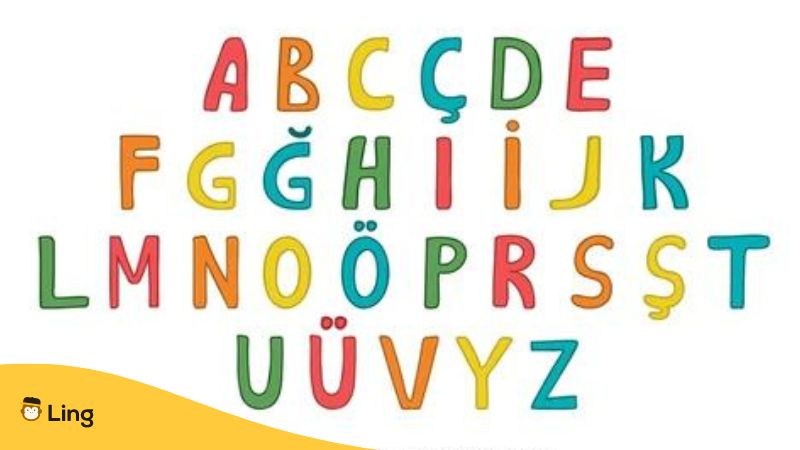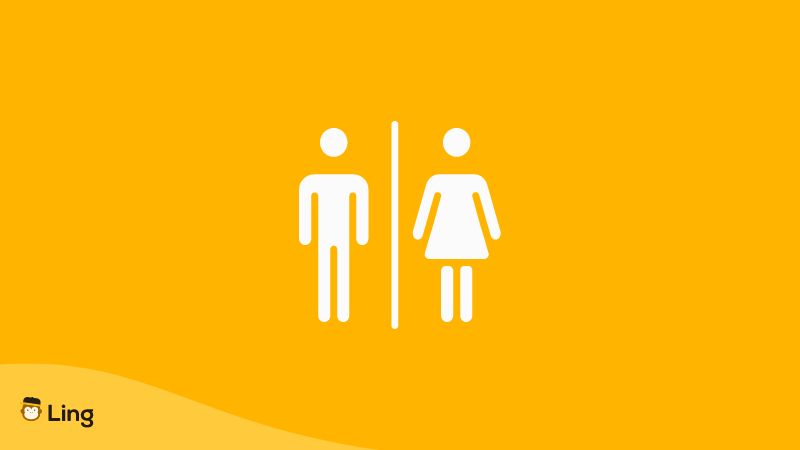Is Turkish hard to learn? If this is the question in your head, read this blog post to relieve yourself because learning Turkish is actually easier than you think!
Let me guess: You want to learn Turkish because you are a fan of Turkish dramas, or you’re planning a vacation in Turkey soon, or maybe you have a special someone from Turkey in your life. These are all great reasons for learning Turkish.
But rumor has it that the Turkish language is hard to learn since it is a very different language from English. Do you believe the difference equals difficulty? I don’t, and I’ll reveal the answer to your question, “Is Turkish hard to learn?” Let’s find out together in this blog post!
Page Contents:
- What Makes Turkish Difficult To Learn?
- What Makes Turkish Easy To Learn?
- How Long Does It Take To Learn Turkish?
- Start Learning Turkish With Ling!
What Makes Turkish Difficult To Learn?
Some Turkish learners complain about how difficult the Turkish language is. You may think so if you’re accustomed to studying European languages. However, you can’t simply claim a language to be difficult because of its unique nature. So you simply have to get familiar with the features of Turkish first.
I know some challenges, like the agglutinative nature, vowel harmony rules, and suffixes, intimidate you while learning Turkish. But you’ll see that there is no need to be afraid because Turkish is one of the world’s most systematic and logical languages.
Turkish Is Agglutinative, With Tone Suffixes
As a member of the Turkic language family, Turkish is an agglutinative language. It means that there is a specific suffix for each function, and you must stack up suffixes at the end of a word for every new bit of information.
However, in Western languages, you have separate words for that. Alright, let me clear it up for you with an example:
- Their -> It’s just one word, no suffixes. But it has three functions.
- Functions: 3rd person, plural, possessive
- Onların -> O(n)-lar-ın -> It consists of a root and two suffixes. And it also has three functions.
- Functions: (o) 3rd person, (-lar) plural, (-ın) possessive
So, there is a different suffix for every function, such as the person, number, possessive, tenses, etc., in Turkish.
Turkish Vowel Harmony
Vowel harmony is a must-know for speaking Turkish fluently. You may see it as a challenge, but it’s easier than you think. I’ll help you grasp the logic behind it. But first things first, what is vowel harmony? Oxford Languages defines it as:
“The phenomenon in some languages, such as Turkish, where all the vowels in a word belong to the same subclass, such as all front vowels or all back vowels.”
The Turkish alphabet has 8 vowels (a/e/ı/i/o/ö/u/ü), and they are classified into various subclasses.
| Unrounded | Unrounded | Rounded | Rounded | |
| Open | Open | Close | Close | |
| Back | A | I | O | U |
| Front | E | İ | Ö | Ü |
When adding a suffix, check the last vowel in the root word and change the vowel of the suffix according to vowel harmony rules. The vowels that follow each other must belong to the same subclass.
So, if the root word’s final vowel is an -a, the first vowel of the suffix you’ll add must also be an “-a” or “-.” Here are some examples:
- Kapı -> kapı-lar
- Pencere -> pencere-ler
- Kalem -> kalem-im
- Ol -> ol-du
What Makes Turkish Easy To Learn?
We’ve talked about the relatively difficult parts of Turkish grammar, but we can’t underestimate the easy parts of it. Learning Turkish offers you more ease than you think. Now, let’s get to the sweet part!

Turkish Uses The Latin Alphabet
Contrary to what many people assume, Turkish uses the Latin alphabet. Well, it’s true that it used the Arabic script before 1928, when Atatürk, the founder-leader of the Republic of Turkey, declared the alphabet reform. It was the time when the Turkish alphabet began to use Latin letters instead of Arabic letters.
As you can see in the picture above, the Turkish alphabet is similar to the English alphabet to some extent. Turkish has some special letters for specific sounds, such as:
- Ç = Ch
- Ş = Sh
- Ğ = Silent letter
The letters below have slightly different pronunciations than an “O” and “U.” You should try to produce these sounds from the front of the mouth with your lips pursed tightly.
- Ö = as in “dirt”
- Ü = as in “brew”
Also, note that Turkish doesn’t have the letters “Q, W, and X.”
No Articles In Turkish
Many other languages, like Spanish, German, and Italian, have definite or indefinite articles, which are a pain in the neck for us, language learners. Guess what language doesn’t need articles? Turkish!
Yes, you’ve read it correctly; the Turkish language has no articles, and I think that makes learning Turkish easier. Just memorize the Turkish vocabulary without any articles, and you’re good to go!

No Genders In Turkish
As you know, in many European languages, nouns have a gender even though they are not personal pronouns. Again, Turkish saves you from trouble.
The Turkish language has no grammatical gender. It doesn’t even have a gender distinction for the third person singular, so it’s totally a genderless language. So if you’re speaking Turkish, you don’t have to identify your pronouns because nobody can assume your gender, at least linguistically.
| 3rd person singular in English | He (male) – She (female) |
| 3rd person singular in Turkish | O (no gender) |
So it can be both a male and a female. Generally, you can understand it from the context, but you may have to ask about it in some cases.
No Irregular Words In Turkish
Here’s yet another reason to adore Turkish. There are no irregular words in the Turkish language. There are no irregular verbs that you have to memorize over and over again because instead, it has suffixes to inflect verbs according to tenses.
It Is Easy To Read And Write
Another easy part of Turkish is that each letter makes only one sound, and it always makes that sound. It makes pronouncing words so easy that, after an effortless study, you can pronounce Turkish words correctly.
Do you still think Turkish is hard to learn compared to English with its nearly endless list of rules and exceptions in pronunciation?

Locals Are Super Helpful
The attitude of native speakers can highly influence your motivation level for the target language. You’re lucky that native Turkish speakers are so approachable and helpful. They really like it when foreigners try to speak Turkish, and they encourage you to learn even more. You can make them smile with a small merhaba or teşekkür ederim.
It Has A Flexible Word Order
The sentence structure of Turkish normally goes “subject-object-verb,” whereas English is “subject-verb-object.” So this is something new and unusual for you, but Turkish is not as strict as English about sentence structure.
While the only correct and acceptable way to form sentences in English is “S-V-O,” Turkish gives you much more freedom, meaning there is more than one acceptable and understandable way to form sentences. For example:
| English | I’m going to school. (S-V-O) |
| Turkish | Ben okula gidiyorum. (S-O-V) ✔ Okula gidiyorum ben. (O-V-S) ✔ Gidiyorum ben okula. (V-S-O) ✔ |
All three sentences above are correct and understandable. In daily speech, native speakers don’t usually stick to the “S-O-V” structure. Because you can change the order of words to shift emphasis from one word to another.
That is why it is nearly impossible to form an incorrect sentence in Turkish. Sounds very appealing, huh?

How Long Does It Take To Learn Turkish?
Alright, these all are cool but how long does it really take to learn Turkish? According to the foreign language difficulty list of the FSI (Foreign Service Institute), learning Turkish takes roughly 44 weeks to reach the B2-C1 proficiency level for English speakers. Of course, this time can be shorter or longer based on your native language.
I hope you are no longer afraid of learning such a systematic and logical language like Turkish after reading this blog post. If you don’t know where to start, Ling can help you with that!
Is Turkish Hard To Learn?
We have covered both the easy and difficult parts of the Turkish language so far. Do you think learning Turkish is still hard after reading this blog post? I admit it’s harder than learning European languages and it takes a lot of time but it is not as hard as learning Chinese or Japanese. So don’t demotivate yourself, learning Turkish is not as hard as you think. It’s even easier when you’re visiting Turkey!
Start Learning Turkish With Ling!
If you want to learn Turkish or other languages, waste no more time and check out Ling to start learning something new today!

Ling is a language learning app designed to help all language learners passionate about learning a new language. Ling consists of various interactive exercises, such as writing and listening exercises, mini quizzes, and an AI chatbot to practice your speaking skills. Ling offers you everything to enhance the four primary language skills.
Also, remember to go to Ling’s Turkish blog for new weekly articles about learning Turkish and its culture!
So, what are you waiting for? Download Ling for free from the App Store or Play Store!
Kolay gelsin! Görüşürüz!


























